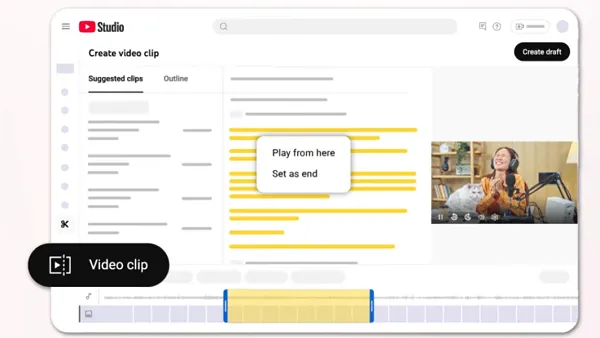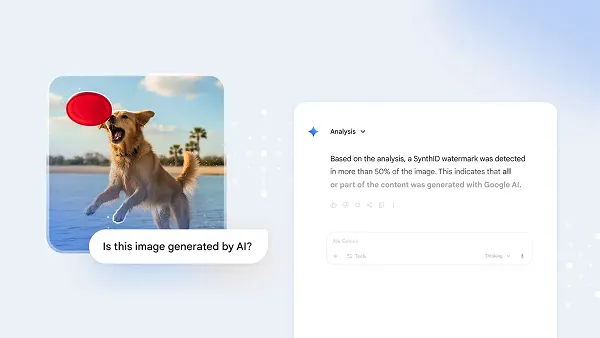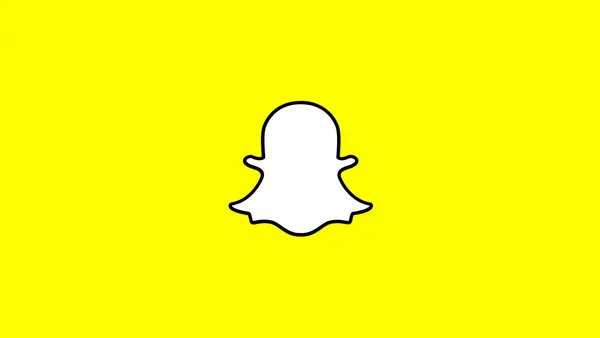Pew Research has published its latest overview of the use of social media as a news source, and how people are increasingly relying on social media apps to keep them informed of the latest information and updates.
Which is a critical consideration. Over time, more and more people have come to rely on social media as a news and information source, guiding their thinking on key topics, and how they support, or don’t, political candidates. Indeed, it’s not a stretch to say that social media now shapes the world we live in, whether you personally use it or not, and as such, it’s worth noting the latest trends, and understanding how people are keeping themselves informed on key news issues.
First off, in terms of social media news sources, Facebook and YouTube still lead the way, though both TikTok and Instagram are steadily rising as news sources.
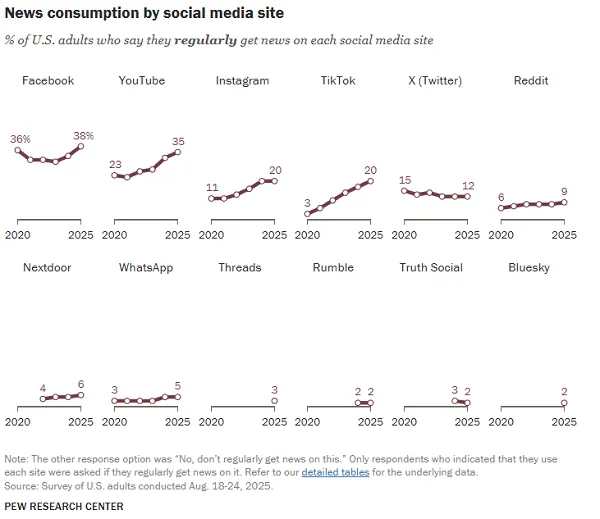
As you can see in these charts, 38% of U.S. adults regularly get news updates from Facebook, followed by YouTube (36%) then TikTok (20%) and Instagram (20%).
X’s value as a news source has declined in recent years, following Elon Musk’s takeover of the platform formerly known as Twitter, while Threads is making its debut appearance in Pew’s report.
It’s interesting, and somewhat concerning to see that Facebook remains a key news outlet, especially given its more recent shift away from third party fact-checking, with crowd-sourced Community Notes failing to provide the same levels of protection from misinformation in social apps. Facebook is also increasingly being filled with AI-generated garbage, and with so many people relying on the platform for news content, it does seem like there are various vectors for misinformation and misleading reports, which could skew broader understanding.
But Facebook is also the most-used social media platform in the world, and while others are likely now seeing more time spent within their apps, Facebook remains a critical connector, and clearly, a key source of news and information for many people.
Indeed, about half of U.S. adults (53%) say that they get at least some news from social media, which is around the same level that it’s been for the past few years.
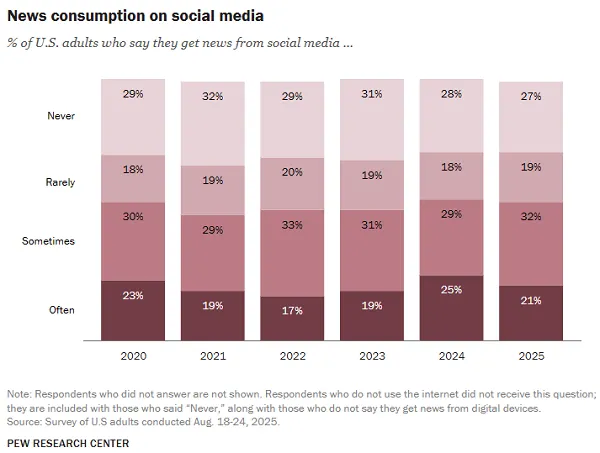
It’s interesting, too, to note news consumption among regular users of each app, with this element more specifically looking at how regular users of each app use them for news content.
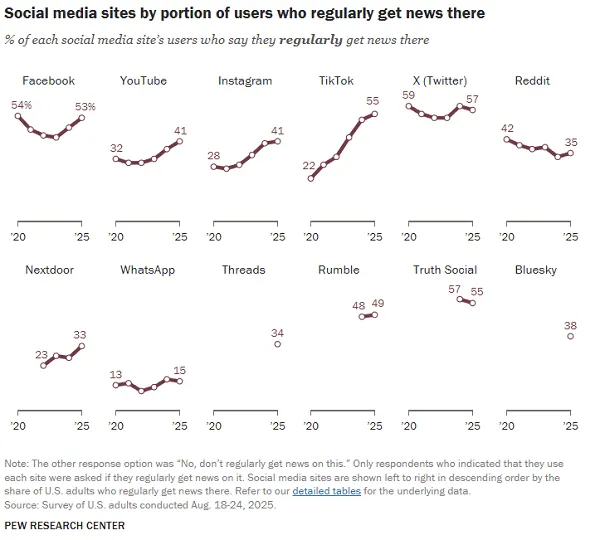
Facebook seems to have regained its value for news in the last two years, which could also be related to its switch to Community Notes, while both TikTok and Instagram are becoming more critical news sources for their respective audiences. That suggests that these apps are more relevant news providers for younger people, which could point to evolving informational trends, and where audiences will increasingly be looking to get informed about the latest topics.
That’s also reflected in this chart relating to TikTok specifically:

Young audiences are far more likely to get news input from TikTok, which underlines its rising value as an informational source, and a key medium for distributing news updates in order to reach these audiences.
Which is why politicians are now posting TikTok clips, and why Donald Trump is so keen to save TikTok, which he’s credited for helping him win the 2024 election.
Though this also underlines the concerns that security officials have around TikTok’s influence, and the potential for the app to be used as a means for the Chinese government to influence opinions in other nations.
That’s part of the reason why the app has been skirting a ban in the U.S. (which it now seems to have avoided), and if this remains an element of concern, the rising influence of TikTok as a news provider surely underlines its power in this respect.
Essentially, TikTok and IG are becoming more powerful, while Facebook remains the key driver of broader opinion. Whether that’s a good thing or not is down to your individual perspective, but if you want to get a better understanding of why people think the way they do, and how they see political issues, these notes could point you in the right direction.
Either way, some interesting data on the state of news consumption across social media apps, and the influential role that social continues to play in shaping opinions, and informing people of the latest updates.
You can check out Pew’s full “Social Media News” report here.







